27 Results
Measuring Innovation: Laboratory Infrastructure to Deliver Essential HIV Clinical Trial Results
HIV clinical trials network laboratory functions will continue to evolve to align with scientific priorities and research approaches.

Shaping the Next Era of HIV Therapeutics and Care
The Institute aims to foster the next generation of discoveries that will enable people with HIV to experience a typical lifespan with high life quality. Scientific priorities include removing the chronic HIV medication burden; reducing the incidence of concurrent TB and hepatitis; and ensuring scientific advances can feasibly be scaled to all who stand to benefit.
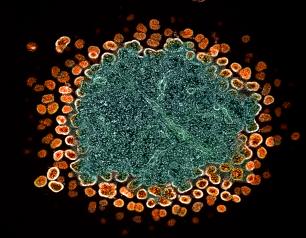
HIVR4P 2024 Research Highlights: Reproductive Health While on PrEP and Signals to Guide HIV Vaccines and Cure
New NIAID-supported science presented at the 2024 HIV Research for Prevention conference in Lima, Peru features a breadth of HIV discovery and translational findings and enriches the evidence base on HIV pre-exposure prophylaxis within the context of reproductive health.

Defining the Goals of HIV Science Through 2034
Discovery, Development and Delivery for an Increasingly Interconnected HIV Landscape
By Carl Dieffenbach, Ph.D., director, Division of AIDS, NIAID
We envision an HIV research enterprise that follows a logical evolution in addressing new scientific priorities informed by previous research progress. We will fund our next networks to align with updated research goals to take us through the end of 2034. Our capacity must reflect an increasing interdependence across clinical practice areas and public health contexts.
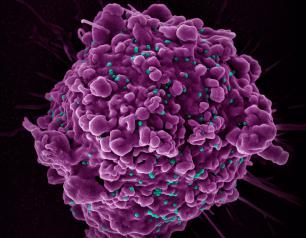
Study Links Certain Vaginal Bacteria and Inflammatory Marker to Increased Odds of Acquiring HIV Among Cisgender Women
Fourteen vaginal bacterial species and the presence of a protein that promotes inflammation were associated with increased odds of HIV acquisition in a study of more than 500 cisgender women in African countries with high HIV incidence. The study was the largest to date to prospectively analyze the relationship between both the vaginal microbiome and vaginal tissue inflammation and the likelihood of acquiring HIV among cisgender women in this population.

Bringing HIV Study Protocols to Life with Representative, High-Quality Research
The HIV clinical trials network sites have made tremendous contributions to NIH’s scientific priorities by offering direct access to and consultation with populations most affected by HIV globally, and by delivering high-quality clinical research with strong connections to trusted community outreach platforms. Future networks will need to maintain core strengths of current models while expanding capacity in areas vital to further scientific progress. These include operations that inform pandemic responses and extending our reach within communities impacted by HIV, including populations historically underrepresented in clinical research.
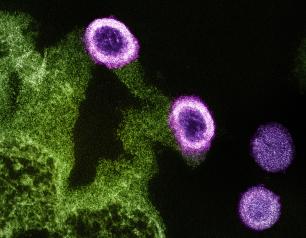
Charting the Path to an HIV-Free Generation
NIAID supports four research networks as part of its HIV clinical research enterprise. Every seven years, the Institute engages research partners, community representatives, and other public health stakeholders in a multidisciplinary evaluation of network progress toward short- and long-term scientific goals. Pregnancy, childbirth and the postnatal period are a key focus of NIAID HIV research and call for measures to support the health of people who could become pregnant as well as their infants.
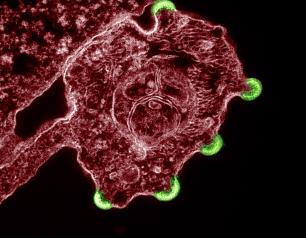
AIDS 2024: Research Updates, HIV Criminalization Laws, and AI (VIDEO)
HIV.gov continued daily coverage of AIDS 2024. This blog post includes recaps of four livestreamed conversations.
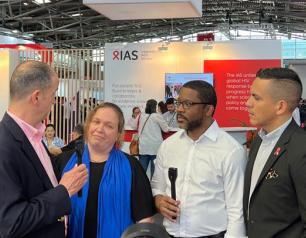
An Emergency Department Screening Strategy Identifies Asymptomatic and Undiagnosed Syphilis
As syphilis rates continue to rise in the United States, emergency departments may be a way for people with limited healthcare access to get screening and treatment.
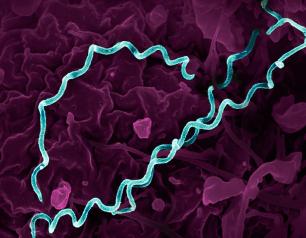
The HIV Field Needs Early-Stage Investigators (VIDEO)
by Jeanne Marrazzo, M.D., M.P.H., NIAID Director
The HIV research community is led by scientists with deep personal commitments to improving the lives of people with and affected by HIV. Our collective decades of work have generated HIV testing, prevention and treatment options beyond what we could have imagined in the 1980s. Those advances enable NIAID to explore new frontiers: expanding HIV prevention and treatment modalities, increasing understanding of the interplay between HIV and other infectious and non-communicable diseases, optimizing choice and convenience, and building on the ever-growing knowledge base that we need to develop a preventive vaccine and cure. The next generation of leaders will bring these concepts to fruition, and we need to welcome and support them into the complex and competitive field of HIV science.
Sexually Transmitted Infections—A Closer Look at NIAID Research
Sexually transmitted infections (STIs) are caused by bacteria, viruses, or parasites. NIAID supports research across the spectrum from basic to clinical science to develop effective diagnostic, preventive and therapeutic approaches to STIs in alignment with the National STI Strategic Plan. In recognition of National STI Awareness Week, NIAID shares a snapshot of new projects and recent scientific advances in STI research.

NIH Ending the HIV Epidemic Projects Bridge Gaps Between HIV Research and Public Health Practice (VIDEO)
The National Institutes of Health recently issued $26M in awards to HIV research institutions in its fifth year supporting implementation science under the Ending the HIV Epidemic in the U.S. initiative. These awards are the latest investments in a program that is rapidly and rigorously generating evidence to inform the unified domestic HIV response by agencies in the Department of Health and Human Services.
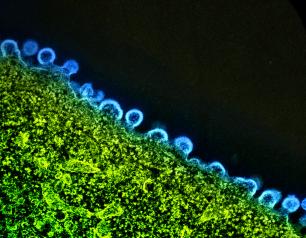
A Change in Drug Regimen is Associated with Temporary Increases in Dormant HIV
Switching to an antiretroviral therapy (ART) regimen containing the drug dolutegravir was associated with a significant temporary increase in reservoirs of latent HIV, according to a new analysis from a study in Uganda. HIV reservoirs are cells where HIV lies dormant and cannot be reached by the immune system or ART. They are central to HIV’s persistence, preventing current treatments from clearing the virus from the body.
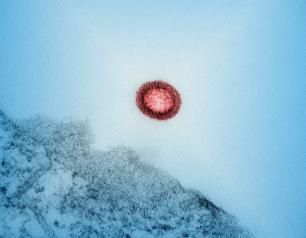
Centering Women and Girls’ Health in HIV Research
Women account for approximately 23 percent of people with HIV in the United States. In recent years, women aged 25 to 34 comprised the highest number of new diagnoses. Furthermore, Black women, transgender women, and women aged 13 through 24 are more likely to experience health disparities associated with lack of access to HIV testing, treatment, and prevention resources. This weekend marked National Women and Girls HIV/AIDS Awareness Day. NIAID supports research programs that focus on HIV and other health outcomes in women to inform and enable more targeted and effective HIV prevention, care, and treatment.
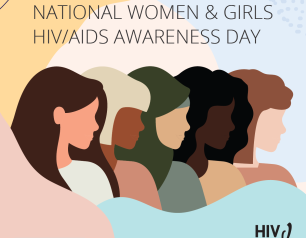
Promising Outcomes with HIV Treatment Started Promptly After Birth: Deborah Persaud Presents at CROI 2024 (VIDEO)
On the final day of the 2024 Conference on Retroviruses and Opportunistic Infections (CROI), HIV.gov spoke with Deborah Persaud, M.D., professor of Pediatrics at the Johns Hopkins University School of Medicine and director of the Division of Pediatric Infectious Diseases at Johns Hopkins Children's Center, who reported findings from a study about whether very early initiation of antiretroviral therapy (ART) may limit the establishment of HIV reservoirs in newborns, potentially enabling ART-free remission. Dr. Persaud spoke with Catey Laube of NIAID's Office of Communications and Government Relations. Watch their conversation.

Addressing Liver and Cardiovascular Disease among People with HIV and HIV Prevention During Pregnancy: Dr. Dieffenbach’s Second Update from CROI 2024 (VIDEO)
On Tuesday at the 2024 Conference on Retroviruses and Opportunistic Infections (CROI), HIV.gov spoke with Carl Dieffenbach, Ph.D., director of NIAID’s Division of AIDS, about research on common health complications of HIV and the safety of an HIV prevention tool during pregnancy. He spoke with Miss Molly Moon, M.S.W., Deputy Director of the NIH-supported Office of HIV/AIDS Network Coordination. Watch their conversation.

Toward a Deeper Understanding of Effective Oral HIV Pre-Exposure Prophylaxis Use in Cisgender Women
Pivotal studies supported by NIAID demonstrated that oral pre-exposure prophylaxis (PrEP) reduces an individual’s likelihood of acquiring HIV through sex by up to 99% when taken as prescribed. Research has revealed important differences in individual and population-group preferences in oral PrEP use, particularly that cisgender women participating in studies often did not take oral PrEP as prescribed—and the intervention’s effectiveness declined when doses were taken less frequently. Jeanne Marrazzo, M.D., M.P.H. and colleagues conducted a pooled analysis of data from post-marketing demonstration projects to to characterize the relationship between oral PrEP use and its efficacy among cisgender women.

In People with Stable Lupus, Tapering Immunosuppressant Linked to Low Flare Risk
In people with a form of lupus called systemic lupus erythematosus (SLE), the risk for a severe flare-up of disease was low for both individuals who tapered off long-term immunosuppressive therapy and those who remained on it, a clinical trial has found. The National Institute of Allergy and Infectious Diseases (NIAID), part of the National Institutes of Health, sponsored and funded the trial. The findings were reported today in the journal The Lancet Rheumatology.

Study Examines the Association of Frailty, Age, and Biological Sex with COVID-19 Vaccine–Induced Immunity in Older Adults
Understanding immunosenescence is crucial for vaccine development and implementation in older populations to induce a robust immune response for protection against infectious disease. This study characterized the intersection of sex and aging on the antibody response to the Moderna and Pfizer COVID-19 vaccines.
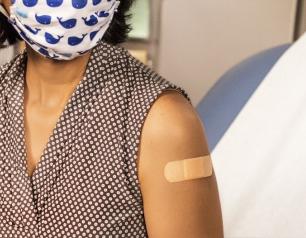
Among People Living with HIV, Study Finds Higher Burden of Aging-Related Comorbidities in Women Than Men
The growing uptake of antiretroviral therapy (ART) has resulted in an increase in the lifespan of persons with HIV (PWH); however, aging-related non-AIDS comorbidities (NACM) are now on the rise and present a new health challenge.
IAS 2023—HIV Vaccines, bNAbs, and an Update from NIH’s Office of AIDS Research
This blog is cross-posted from HIV.gov.
On Tuesday at the International AIDS Society’s 12th Conference on HIV Science (IAS 2023), HIV.gov continued our conversations about research highlights, including a focus on the latest about HIV vaccines. We also heard an update from the NIH Office of AIDS Research.
NIH’s Carl Dieffenbach, Ph.D., Director of the Division of AIDS at the National Institute...
IAS Conference Highlights—Heart Disease Prevention for People with HIV, Long-acting HIV Prevention and Treatment
During the first full day of sessions at the International AIDS Society’s 12th Conference on HIV Science (IAS 2023), HIV.gov shared conversations on important study findings about reducing cardiovascular disease among people with HIV and the latest developments with long-acting prevention and treatment options that could one day become safe and effective alternatives to daily oral pills.
Study Finds That People Who Recover From Ebola Virus Infection Can Have Healthy Pregnancies and Children
The Ebola outbreaks in 2014 and 2016 resulted in high mortality; however, many people who were infected recovered. Studies have demonstrated that after recovery Ebola virus can persist throughout the body in the eyes, brain, semen, human milk, and vaginal secretions.
Study Links Gut Microbiome Dysbiosis with Recurrent Urinary Tract Infections
This study explored the microbiome connection between the gut and the bladder, or the gut-bladder axis, by characterizing the direct and indirect influences of gut microbiota on the bladder, including the effects of antibiotics to the infection and microbiome.
Multisite Study Identifies Factors Associated with HIV Incidence Among Transgender Women
Despite the high HIV burden among transgender women, access to health care among this demographic is low due to structural barriers that limit access to HIV prevention, testing, care, and other health services. Therefore, transgender women have been identified as a priority population in the Ending the HIV Epidemic in the U.S. (EHE) plan and National HIV/AIDS Strategy.

